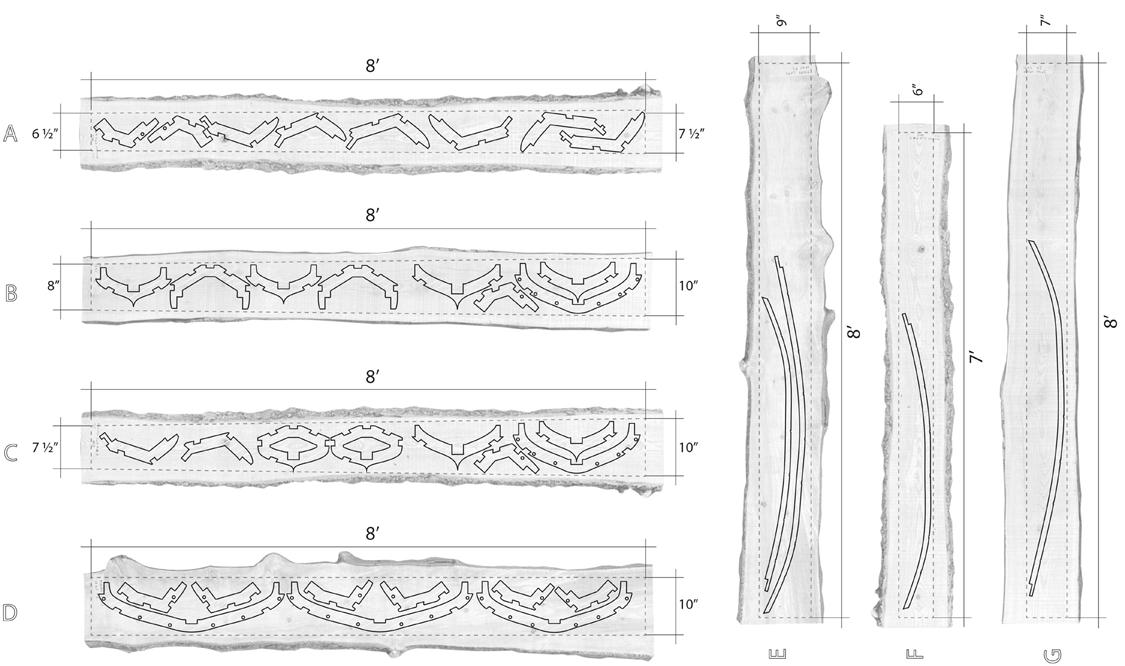
2 minute read
BUILDING BOATS/ BOAT BUILDINGS
from Intersight 25
by University at Buffalo School of Architecture and Planning, University at Buffalo
Students:
Faculty:
Advertisement
Term: Course: Program:
Students of ARC302
Kenneth MacKay (coordinator), Elaine Chow, Randy Fernando, Anahita Khodadadi, Gregory Serweta Fall 2022
ARC301
BS Arch
How can architects translate hands-on knowledge of building tectonic objects into the design of complex structures? The regatta—an annual tradition— serves as a milestone event for the junior studio that seeks to address this question. Racing hand-crafted vessels along Buffalo’s Gallagher Beach is a core memory for many students. The fast-paced construction process takes place over the first month of the studio and involves translating digital geometries into a full-scale construction project. The relationship between a structural frame and a watertight envelope is used as an analogy and reference for the design of building projects later in the semester.
Each year the fall studio takes a slightly different tackle than years prior. This semester focused on the use of wood as the primary building material with a focus on sustainability. Students began their research individually, analyzing particular geometries utilizing either linear pieces of wood or sheets of plywood wrapped around structural frames. Using this work as a foundation, students combined into teams of six to build two boats per studio, each accommodating two skippers. Teams worked together on regatta day to compete against the other studios in hopes of capturing the Keelson Award, a trophy passed down year after year, with the winning boat’s name engraved into the side of the acrylic block.


The vessels built by students all followed the same set of guidelines; to accommodate two students at a time, each boat followed maximum dimensions of 12’-0” long x 3’-6” wide x 2’-6” deep. Powered by paddles, the seaworthiness of each vessel was judged on its ability to displace the weight of the skippers and how well they were able to maneuver it through the water as well as their innovation, craft, and elegance.
These lightweight buoyant objects with complex spatial geometry built at full scale tested students’ ability to combat water density, gravity, and wind. Structure and skin, which in the boat project work in harmony to keep water out, have a direct relationship to the needs of a building. Following the boat building process, students spent the remaining portion of the semester designing a boathouse and exhibition space. These proposals provided direct access to the Erie Canal and prioritized the land and water threshold. Translating the experimental boats to buildings is central to this integrated studio’s themes of structure and enclosure.
"As a team, we opted to move away from the traditional methods of boat construction, but rather used entirely CNC-cut pieces that would fit together through a complex system of joinery."
- Ian Simmons, The Vulture
The Vulture
Focused primarily on modularity and interlocking mechanisms, The Vulture team designed a prefabricated canoe focused on joinery. With tailor-made joints, the team avoided using screws, nails, or other standard fasteners. Its dacron skin worked alongside the joinery to hold everything in place through a stretched inward force. The thin, watertight material highlighted the frame to create a drum-like effect.


The Curly Bracket
The Curly Bracket comes from studying traditional canoe and kayak forms and focusing on sustainable design. This team chose to use natural materials even if the resultant processes were more difficult or time consuming.
Material sourcing became a driver for this group, using White Ash trees for the boat’s structural members. Many of the ash trees in Buffalo are dying due to beetles feeding on the wood, cutting off all nutrient transport and killing the tree. Before the trees became unusable, the team repurposed the wood for their boat, producing wood chips with any extra material. Cutting logs into slabs, the waterjet cut out the slightly “V” shaped ribs to cut and displace water in a way that reduces drag.











